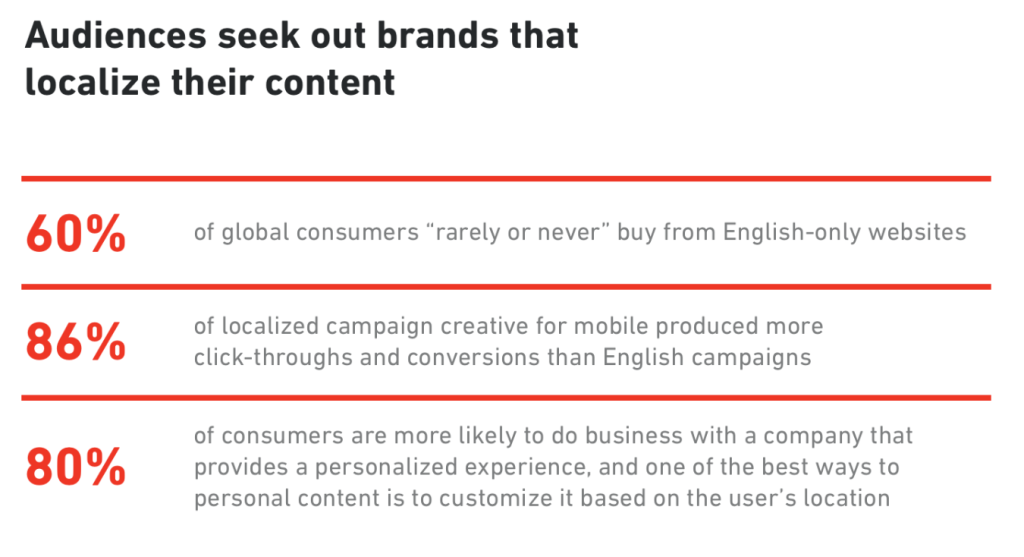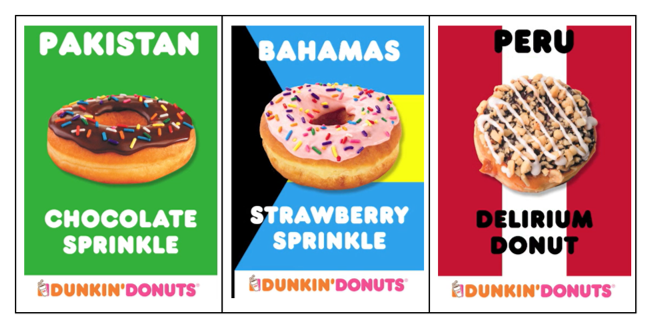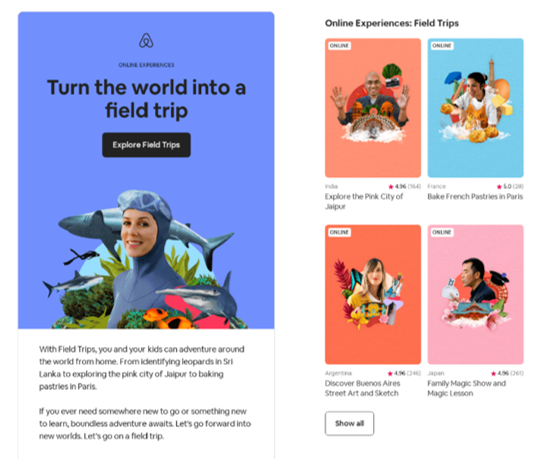- Home
- Science-Backed Marketing Insights
- How to Get Started with Multil ...

✨ Key takeaways:
⭐ Multilingual email marketing helps connect with global audiences.
⭐ It is crucial to not just translate but also localize the content.
⭐ When localizing email content, it is crucial to comply with local laws (GDPR, CASL, double opt-in).
⭐ Send times and frequency should match regional habits and time zones.
⭐ Specialized tools can help simplify the processes of local email adaptation.· Testing and analytics by region help refine campaigns and boost engagement.
Imagine you open your inbox and find a promotional email for a product you love; there’s just one “but”—it is written in a language you don’t understand. Chances are, you’d delete it or mark it as spam without a second thought. This simple scenario illustrates why multilingual marketing is critical for international email. In today’s connected world, 76% of users prefer to buy products in their native language. So, if your email campaigns don’t speak the language of your diverse audience, your message will be lost in translation.
In this comprehensive guide, we’ll explain what multilingual marketing means in the context of email campaigns and why it’s so vital for international success. We’ll explore how email fits into a broader multilingual marketing strategy and break down the key elements you need to get right—from segmenting your contact lists by language to localizing content and design.
What Is Multilingual Marketing?
Multilingual marketing is the practice of communicating with your audience in multiple languages. In the context of email, multilingual marketing means creating campaign emails in the native languages of different customer segments around the world. This job is far more complex than a quick Google Translate—it involves understanding the cultural and linguistic nuances of each market and adjusting the content accordingly.
In this context it is important to distinguish between translation and localization. Translation is the starting point. Localization takes it a step further by adapting the content to the local culture, values, idioms, and context. In other words, multilingual marketing speaks to customers in their own language and cultural context, literally and emotionally.
Why does this matter so much? Because people respond better to content in their native language—it feels more personal and credible. Multilingual emails that include culturally relevant references (like local holidays or sayings) or even just the correct formal vs. informal tone for that culture can significantly boost that sense of connection, leading to higher open rates, click-through rates, and, ultimately, conversions.
The Role of Email in Multilingual Marketing
Email holds a unique and powerful role in any multilingual marketing strategy. While social media and web content are important, email remains the most direct line to your customer’s attention. Here’s why email is such a powerful global channel and how multilingual email marketing fits into your broader international plans:
Email’s global reach and impact: People across all demographics and regions rely on email daily for communication, which means your marketing emails have immense potential in international markets. Not only is the audience there, but the effectiveness is proven: email consistently outperforms many other digital channels in driving conversions and sales. The trust factor is also higher—consumers often consider email more official or credible, especially when it’s written in a language they understand well. This makes email a perfect vehicle for personalized, localized messaging. Regardless of the email type, by writing it in the subscriber’s preferred language, you can significantly amplify the message’s impact.
Fitting email into your international strategy: If your company is expanding into new regions or already has a global customer base, multilingual email campaigns should be a key component of your international marketing strategy. You may have translated your website or created region-specific social media accounts, but if all your emails are still in one language, there’s an obvious disconnect in the customer experience. Multilingual email marketing allows your outreach to align with localized websites, customer support, and other marketing efforts, creating a culturally personalized journey for users in each country. This strategy fits perfectly into a “think global, act local” approach: you maintain a global brand voice and strategy but execute it with consideration of local cultural nuances.
The growing demand for multilingual email marketing: As more businesses go global and e-commerce breaks down geographic barriers, the need for multilingual communication has skyrocketed. Customers now expect brands to meet them where they are, linguistically and culturally. Companies have taken note: in content marketing overall, the vast majority are investing in translations and localizations—one analysis found only about 8% of companies do not translate content at all. Embracing global multilingual marketing via email is quickly becoming expected.

Key Elements of Effective Multilingual Email Marketing
🔹 Thoughtful language segmentation
Before writing a single word, sort your audience. Group your email subscribers by preferred language, region, or even dialect when relevant. This allows you to avoid awkward mismatches like sending a campaign in Brazilian Portuguese to someone who speaks European Portuguese. Many global companies start with just 2–3 language segments and gradually scale.
🔹 Localized content that goes beyond words
Translation is not localization. To really connect with a global audience, you need to reflect cultural nuances, tone, currency, local idioms, even humor. For example, a Valentine’s Day promotion might work great in the US and France but fail in countries that don’t celebrate it. Localization means rethinking everything from subject lines to product references so they feel native to each reader.
🔹 Design that works in every language
Text expansion can bring chaos to layouts—German and Finnish often take up 30–50% more space than English. Your template should allow room for line breaks and larger copy blocks. Also consider RTL (right-to-left) compatibility for Arabic or Hebrew.
🔹 Workflow coordination and quality control
Managing multiple languages requires a clear internal process. Who translates? Who reviews? Who ensures the tone stays on-brand? Build a workflow that includes translation, proofreading, design checks, and legal compliance (if needed). Some companies use style guides for each market to make this smoother—especially helpful if you’re working with freelancers or rotating staff.
Building a Winning International Email Marketing Strategy
1. Research and prioritize target markets
Start by identifying which countries or regions show strong interest in your brand. Use web analytics and CRM data to see where your traffic and sign-ups are coming from. For example, if you notice increased traction from Mexico and Spain, Spanish should be one of your first localization efforts.
2. Define clear goals and KPIs
Before translating anything, decide what success looks like. Want more newsletter signups from France? Higher conversion rates in Germany? Set clear KPIs—like increasing French CTR by 20% after localization. These goals help you measure performance and justify your multilingual investment.
3. Localize your content
Translation is only step one—localization is what truly connects your brand with your audience. Adapt your tone, offers, visuals, and even humor to each culture. When Coca-Cola launched its “Share a Coke” international email marketing campaign in China, they replaced names with popular nicknames and slang that resonated with Chinese youth. That’s called transcreation—retaining the idea but reshaping the delivery.
4. Stay legally compliant
Different countries have different rules. The EU’s GDPR requires clear opt-in and unsubscribe options, while Germany strongly favors double opt-in. Add localized privacy policy links and unsubscribe copy. For instance, if you’re running a campaign in Canada, ensure your emails comply with CASL—Canada’s anti-spam law.
5. Adjust timing and frequency
Use local time zones and adjust your sending days based on cultural behavior. A sales email that performs well on Monday morning in the U.S. might be better scheduled for Sunday evening in the UAE. Similarly, while U.S. audiences may tolerate daily deal emails, Nordic audiences might prefer one concise weekly summary.
6. Test, analyze, and improve
Track open rates, clicks, and conversions by region and language. A/B test subject lines or CTAs—like testing “Shop Now” vs. “Explore Offers” in your Spanish emails. You might find that Brazilian subscribers click more on vibrant, image-heavy layouts, while German readers prefer concise, text-driven formats. So, rely on data and local feedback to guide your next emails.
Tools for Multilingual Emails
🔹 Translation and localization tools
These tools can range from simple, free online translators to advanced AI-powered platforms or full-service human translation networks. Examples include Smartling or Crowdin—great if you’re working with multiple languages and want to maintain glossaries or review translations in one place. For smaller teams or tighter budgets, DeepL or Google Translate can offer a solid starting point—just make sure a native speaker does a final review.
🔹 Proofreading and language QA
Even professionally translated content needs a second set of eyes. Tools like Grammarly (for English) or your ESP’s built-in spellcheckers can catch small but costly mistakes. For other languages, you might lean on native-speaking editors or freelance proofreaders. Some companies even use back-translation techniques (translating content back into the original language) to double-check meaning hasn’t gone off-track.
🔹 Email builders and design tools
Multilingual emails call for flexible, easy-to-customize templates—and platforms like Sendigram, TOPOL, or Unlayer fit the bill perfectly. While they don’t offer dynamic content blocks for switching languages within a single template, you can still create highly effective multilingual campaigns by duplicating a design and translating it for each audience segment.
🔹 ESPs with multilingual features
Your ESP should do more than just send—it should help you segment contacts by language, send by time zone, and automate dynamic content. Platforms like HubSpot, Mailchimp, and Salesforce Marketing Cloud support multilingual workflows to varying degrees. Some even let you test different subject lines by region or adapt senders and footers to fit local norms.
🔹 AI and automation
Generative AI tools like ChatGPT can help draft content in different tones or languages, while automation platforms like Zapier can connect your ESP with your translation tools. Want to trigger a translation request the moment you finish your English email? Yep, you can automate that too.
Real-World Examples of Multilingual Email Marketing
Marc Jacobs Japan—localized product launch email
Global fashion brand Marc Jacobs provided a great example of adjusting email content both linguistically and visually. When Marc Jacobs launched its “Heaven” collection in Japan, they sent out promotional emails to Japanese subscribers that were fully localized.
The email wasn’t just the English content translated—it was crafted to feel native to the Japanese audience. They featured an Asian model (so recipients saw someone relatable, rather than, say, a model from a different region) and presented all the text in Japanese, except the brand and collection names, which remained in the original alphabet for brand consistency.
By doing this, the email immediately signaled that it was for the Japanese market in both language and look. Marc Jacobs’ example underlines the importance of combining visual localization with textual localization. For a fashion retailer, this kind of resonance can directly translate to higher click-through (since the products appear culturally relevant) and ultimately more sales in that region.

Dunkin’ Donuts—multilingual global promotion
While not limited to email, Dunkin’ Donuts’ yearly International Donut Day campaign is an inspiring case of multilingual marketing across channels. In one of their global campaigns, Dunkin’ ran an interactive promotion in 24 countries simultaneously, reaching out to customers in at least seven different languages. They localized the campaign content—including a “Donut Menu” widget—for each market, featuring local language menus and messaging. On social media and presumably email, their local country accounts informed customers in their native language about the free donut offer. The campaign’s success was evident in the engagement and the fact that customers worldwide now anticipate this promotion each year.

Airbnb—globalized onboarding series
Consider a company like Airbnb, known to operate in practically every country. While specifics of their email tactics aren’t public, one can infer their approach from user experience. When a new user in France signs up for Airbnb, they receive welcome and onboarding emails in French, whereas a new user in Korea gets those emails in Korean. This localized onboarding is crucial for a platform that relies on user trust and comfort. Users feel the platform is truly meant for them in their country, not a foreign product. This likely contributes to higher activation rates—more hosts listing properties and guests booking—because communication isn’t a barrier. The implied lesson for any globally expanding tech company is to localize your email lifecycle communications, not just the occasional promo.

To Sum Up
Reaching a global audience through email is both a challenge and a huge opportunity. Multilingual marketing for email campaigns is no longer optional for organizations that serve international customers—it’s a critical strategy for driving engagement, trust, and conversions across borders. By communicating with people in the language they understand best, you remove a major barrier and invite them to form a deeper connection with your brand.
By following the practices outlined in this guide, you’ll be well on your way to crafting email campaigns that truly speak to the world. The result will be more engaged subscribers, a wider global reach for your messages, and ultimately a boost in the success of your email marketing programs across all the markets you serve. Happy emailing in every language, or as they say: Buena suerte, Bonne chance, 祝好运, Viel Erfolg!



